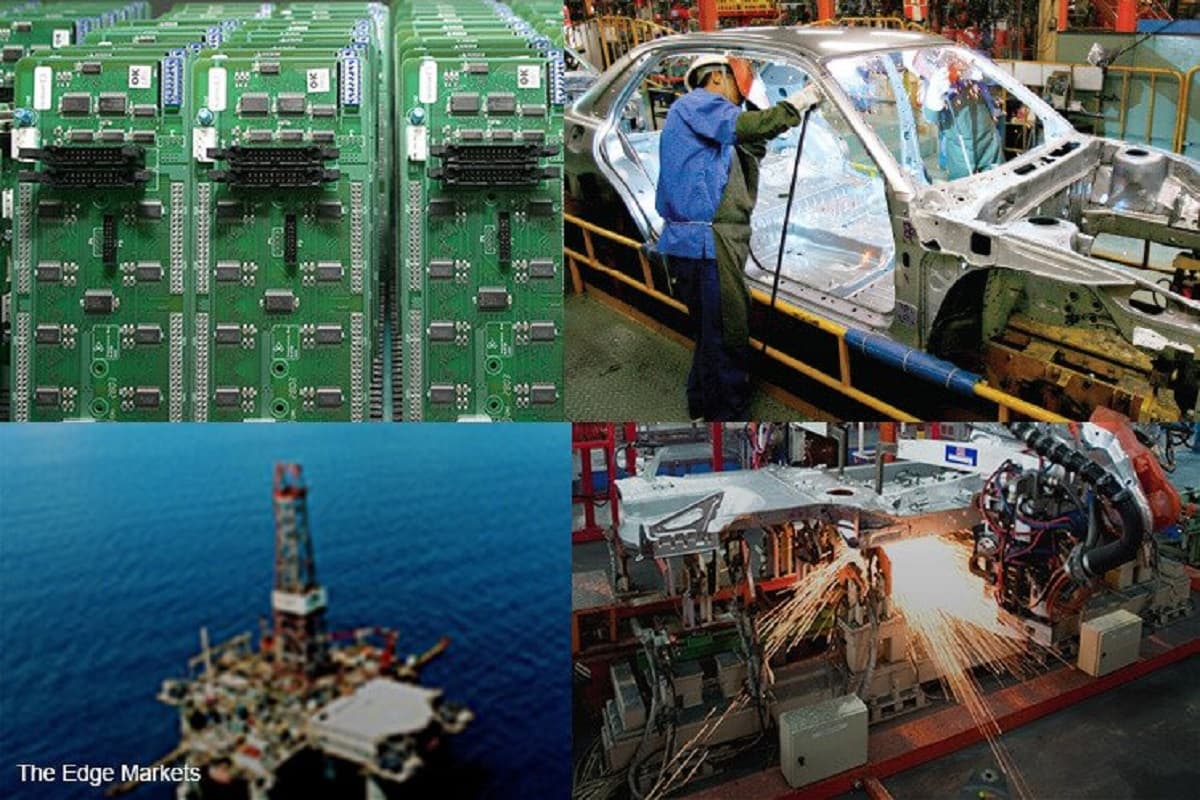
KUALA LUMPUR (Aug 9): Malaysia’s 1.4% growth for its June industrial production index (IPI) data came in less severe than expected due to a smaller-than-expected contraction of 0.2% in manufacturing output, economists said.
Malaysia’s June IPI was also supported by a 10.3% growth in the mining index, led by support from natural gas, although the electricity index continued to decline by 4.8%, according to data from the Department of Statistics Malaysia (DOSM).
While June's manufacturing IPI retreated sharply from the 29.8% year-on-year (y-o-y) growth in May, the market had expected deeper decline than the 0.2% contraction, amid the full movement control order (FMCO) and the selective temporary business closures and manpower restriction imposed since June.
The moderation came about from an 8.7% growth in export-oriented industries, while domestic-oriented industries contracted by 20.8%.
DOSM data showed that the main sub-sectors that contributed to the manufacturing sector were petroleum, chemical, rubber and plastic products (up 19%), and electrical and electronics products (E&E) (up 8.4%), while other sub-sectors contracted.
On a month-on-month (m-o-m) basis, Malaysia’s IPI grew for the first time since March 2021 at a rate of 1.6% on manufacturing segment support of 5.4% growth, while mining and electricity segments contracted 6.4% and 12.3% respectively.
Manufacturing segment's m-o-m growth was supported by a 20.2% growth in E&E, and a 14.5% rise in the petroleum, chemical, rubber and plastic products segment. Other sub-sectors contracted, the data showed.
For the first six months of 2021 (1H2021), Malaysia’s IPI expanded 12.4%, represented by growth in all three segments of manufacturing (15.7%), mining (4.5%) and electricity (4%).
Malaysia Institute of Economic Research senior research fellow Dr Shankaran Nambiar, when contacted, expressed optimism about the road ahead in the second half of 2021.
This is spurred by the rapid roll-out of Covid-19 vaccination, as well as engagement by the government through various councils on Malaysia’s recovery plans, which shows its willingness to receive ideas on new strategies.
“The less optimistic simulations indicate that Covid-19 numbers could trend upwards, before turning downwards in early September. So, at worst, we will have an improvement in the pandemic situation starting in the next few weeks,” Dr Shankaran said in an email reply.
Premised on the vaccination progress, Dr Shankaran is of the view that the manufacturing sector would regain its momentum as economic restrictions are gradually lifted, and consumer sentiment will pick up in the second half of 2021.
“The E&E sector faces a backlog in production. Also, we can expect the wholesale and retail sectors to regain activity,” he said.
“The economy should be easily able to reach a growth rate of 4.5% for the year. Unemployment will slowly ease, fears of job loss will progressively diminish. At worst, we can expect an unemployment rate of 4.3% for the whole year,” he added.
Meanwhile, MIDF Research in a note today kept its full-year IPI growth forecast at 9%, in anticipation of further reopenings in the later part of the year. The research house had in May revised downward the IPI growth from 12.8%, in light of the economic restrictions that were tightened since June.
“For the first six months of this year, IPI growth has been averaging at +14.9% y-o-y.
“We foresee that the pace of growth for industrial production in the latter part of the year will be more moderate, due to the diminishing base effect,” it said.
“We foresee production activities to pick up in the later part of the year, when more restrictions are lifted, subject to improvement in public health and reduced stress on the national healthcare system. However, the resurging Covid-19 cases globally could hurt production outlook, should it lead to weaker demand from end-consumers at least in the near term,” it said, adding that the targeted Enhanced MCO imposed in certain localities in Klang Valley in July has also impacted export-oriented factory operations.
